Announcing Artist Professional Development Grants | Round 26 Recipients
November 19, 2024ANNOUNCING
Artist Professional Development Grants | Round 27 Recipients
Great Meadows Foundation is pleased to announce the award of 16 grants to artists in the Kentucky region through the 27th round of the Artist Professional Development Grants program. These grants will enable recipients to travel to visit major exhibitions, conferences, and artist residencies, and connect with other professionals in the field whose expertise can help them develop their critical practice.
Learn more about the Round 27 Grant Recipients and their upcoming travels below.
Karen Boone
She / Her
www.karenboone.com
@karenboonedesign
Borden, IN
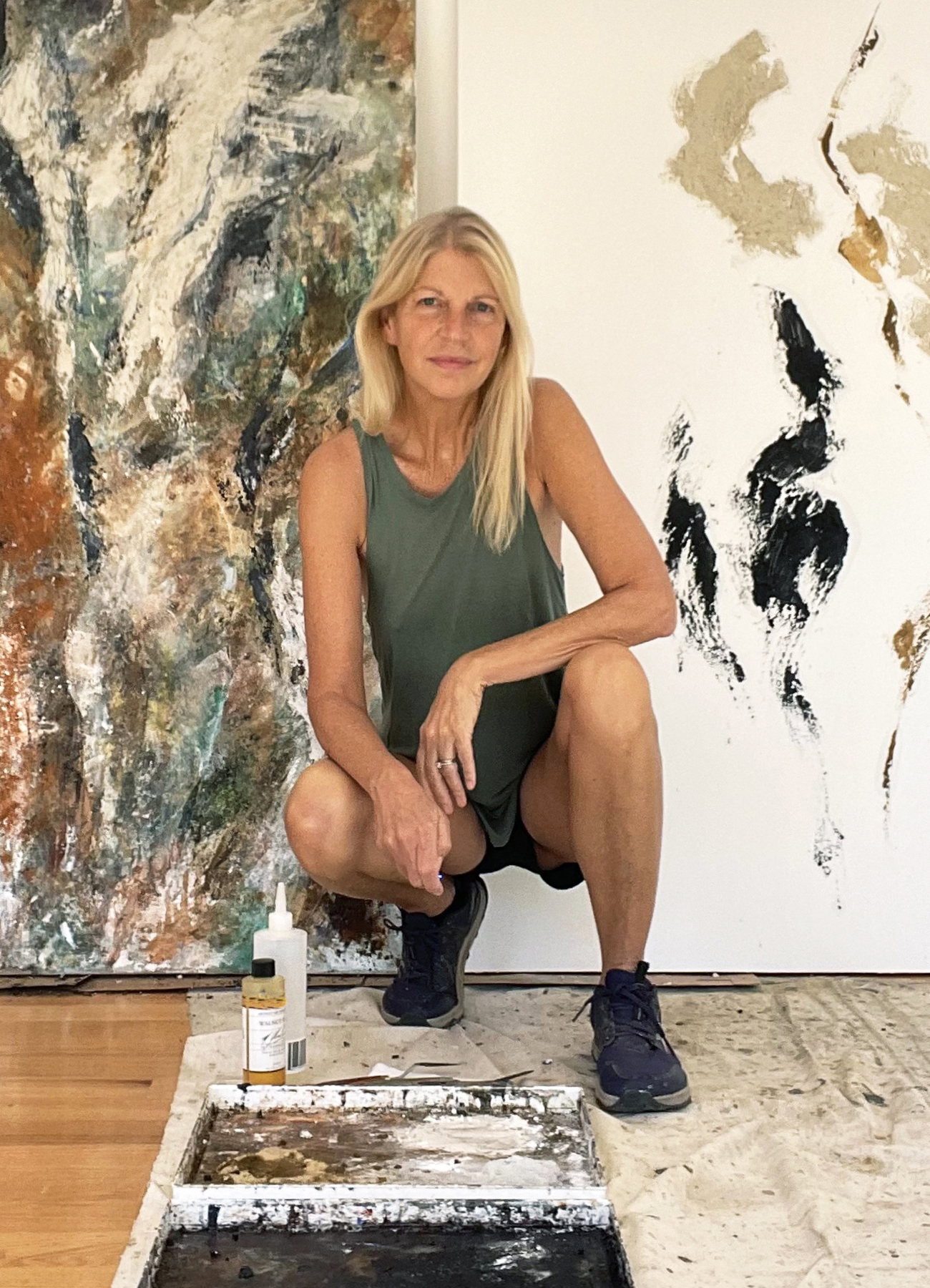
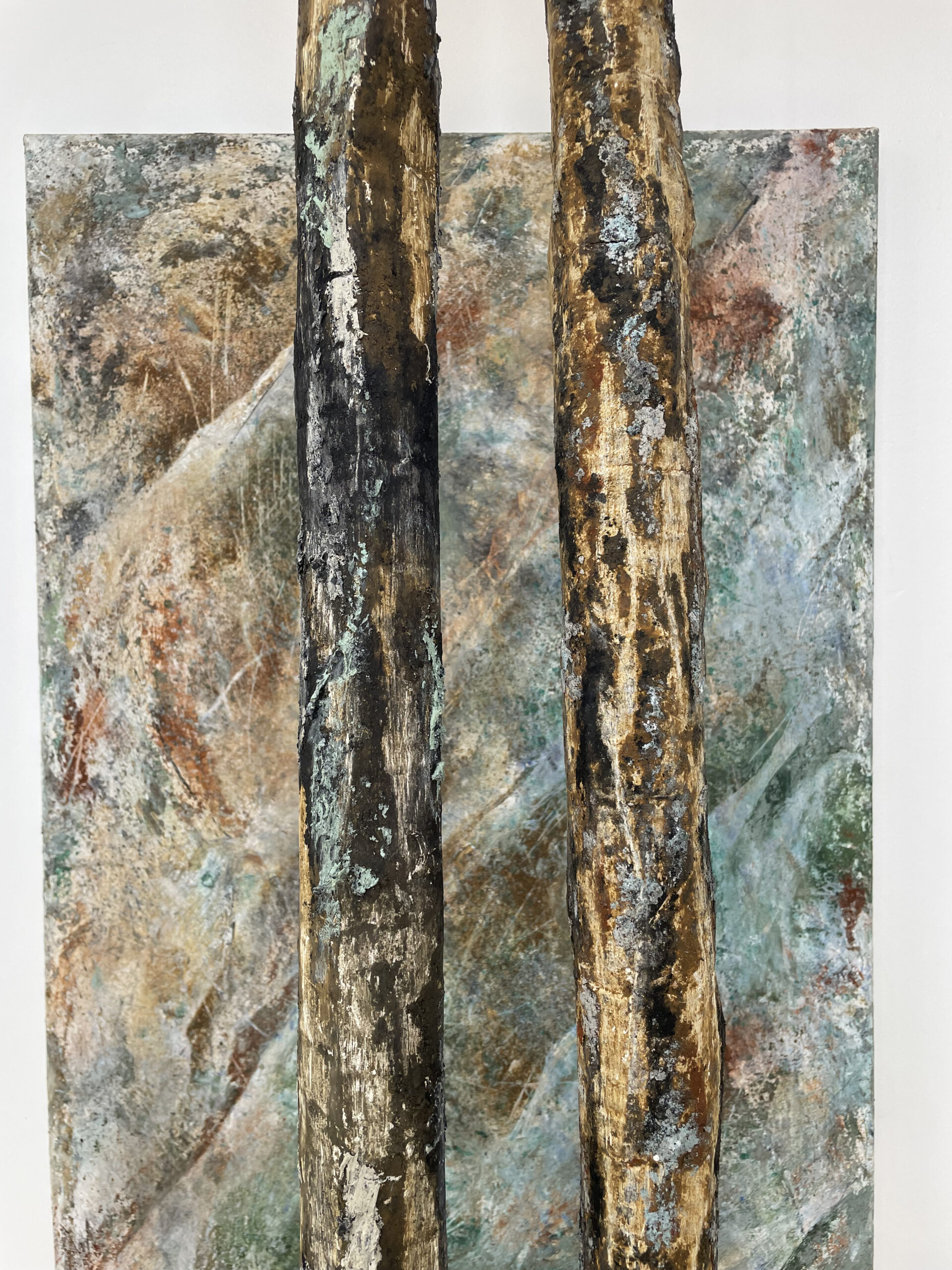
Where will you be traveling?
Helsinki Finland
What will you be traveling for?
I will be attending the Helsinki Biennial 2025, an international contemporary art event on Finland’s archipelago islands, including Vallisaari Island, Esplanadi Park, and HAM Helsinki Art Museum. “Shelter” explores the fragile relationship between humanity and the natural world. I hope to meet Kati Kivinen and Blanca de la Torre, the curators of the Biennial and many of the artists. “Moving beyond human-centric perspectives, the curators foreground non-human actors such as plants, animals, fungi, chemical elements and minerals. They believe this shift in perspective can foster new empathy for other living beings.”
Can you give a short summary of your art practice?
My art practice is a ritualistic commitment to a sustainable relationship with the natural world. I forage for earth pigments, charred wood and found materials which I use to create paintings and sculptures that intend to pull you closer to nature. As I dig for pigments, grind them by hand in a pestle and mortar, and blend them into paint, I feel a powerful connection to the traditions of our ancestors, who used these materials to tell stories and communicate with the land.
What are some of the inspirations for your practice?
Mineral pigments like red and yellow ochre have been used for centuries, found on every continent, for tribal rituals and everyday objects. Archaeological sites dating back 300,000 years have evidence of ochre use, coinciding with the emergence of Homo sapiens. I am inspired by ancient artifacts, petroglyphs, indigenous art, and natural science like Robin Wall Kimmerer’s Braiding Sweetgrass and Suzanne Simard’s Finding the Mother Tree. I engage with archeologists, scientists and artists through Pigments Revealed International and enjoy learning from other global contemporary sustainability artists. I also backpack and hike for endless inspiration.
Julia Coash
She / Her
www.juliaacoash.com
@juliaa.coash
Louisville, KY
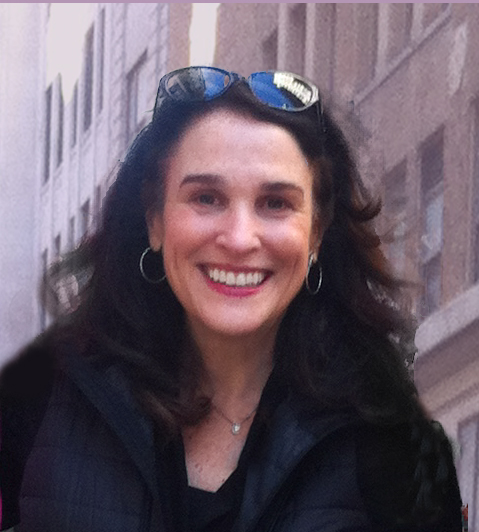

Where will you be traveling?
Mexico City, Mexico
What will you be traveling for?
The focus of my research trip to Mexico will be artists whose work I find compelling and who have influenced my own work, including: Orozco, Mora and others who use repurposed materials to engage with environmental issues; the “Other Cartographies” exhibition (MUAC) featuring artworks that reference maps to address socio-political concerns; works by Tapies and Millares known for expressive use of found materials; Luis Barragan’s architecture, which combines European Modernism and Mexican vernacular styles; and the Museum of Anthropology studying how the environment and worldview of indigenous Mexican cultures have influenced their art and been synthesized into abstract forms.
Can you give a short summary of your art practice?
My “Water Ways” paintings combine recycled maps, nautical charts, and water-based media, juxtaposing wet against dry as a means of exploring the tensions between material and soluble forms in our environment. Influenced by water currents, rising sea levels and atmospheric rivers, strong gestural marks energize the surfaces suggesting aquatic movement, while circular shapes allude to both the micro and macroscopic (atoms, bubbles, or planetary phenomena). Interwoven marks both emerge and are submerged, suggesting meander maps and the ebb and flow of water levels. Themes of interconnection are explored through the play between positive and negative shapes and visual rotation.
What are some of the inspirations for your practice?
My interests in global studies, anthropology and visual culture are important influences on my mixed media works as the surfaces are collaged with maps and other found materials thus revealing the archeology of cultural debris. They have been inspired by sustainable art and architecture discovered on my travels, such as: Japanese Boro – textiles, made from recycled fabric; houses in Fustat, Egypt built by garbage collectors with broken pots and oil cans; the architecture in Phonsavan, Laos made from recycled bomb casings. I find the use of discarded materials to create beautiful textiles and dwellings, both inventive and heroic.
Aaron Cohick
He / Him
www.newlightspress.com
@newlightspress
Louisville, KY


Where will you be traveling?
Madison, Wisconsin
What will you be traveling for?
I will be attending the 2025 CBAA (Association for Book Art Education) Biennial Conference, which is being held at the University of Wisconsin-Madison. At the conference I will be co-hosting and presenting as part of a panel and artists’ books reading. The panel will demonstrate and advocate for readings as an under-explored format for exhibiting and distributing artists’ books. I’ll be performing a digital, non-AI book that will be generated live as I read it. I will also be facilitating an event for emerging members to meet each other and discuss resource-sharing and collaboration.
Can you give a short summary of your art practice?
I am an artist-publisher who works under the name NewLights Press. The core of my work is making books and prints, either as a solo practitioner or in collaboration with other artists and writers. All of the work is united by a close attention to process: to the physical processes of making and material, to the mental processes of reading (both text and image), and to the social and political processes of collaboration.
What are some of the inspirations for your practice?
In my work I look at the history of writing systems, books, and reading from all over the globe and across time, from ancient and medieval manuscripts, through Modernist design, to current digital practices. Particular artists and writers that I return to again and again are: Xu Bing, Nancy Spero, Jack Spicer, Trenton Doyle Hancock, Ken Campbell, Emily McVarish, Kameelah Janan Rasheed, John Yau, Amos Kennedy, Wim Crouwel, and Georges Perec.
Carey Neal Gough
She / Her
www.careygough.com
@careynealgough
Lexington, KY

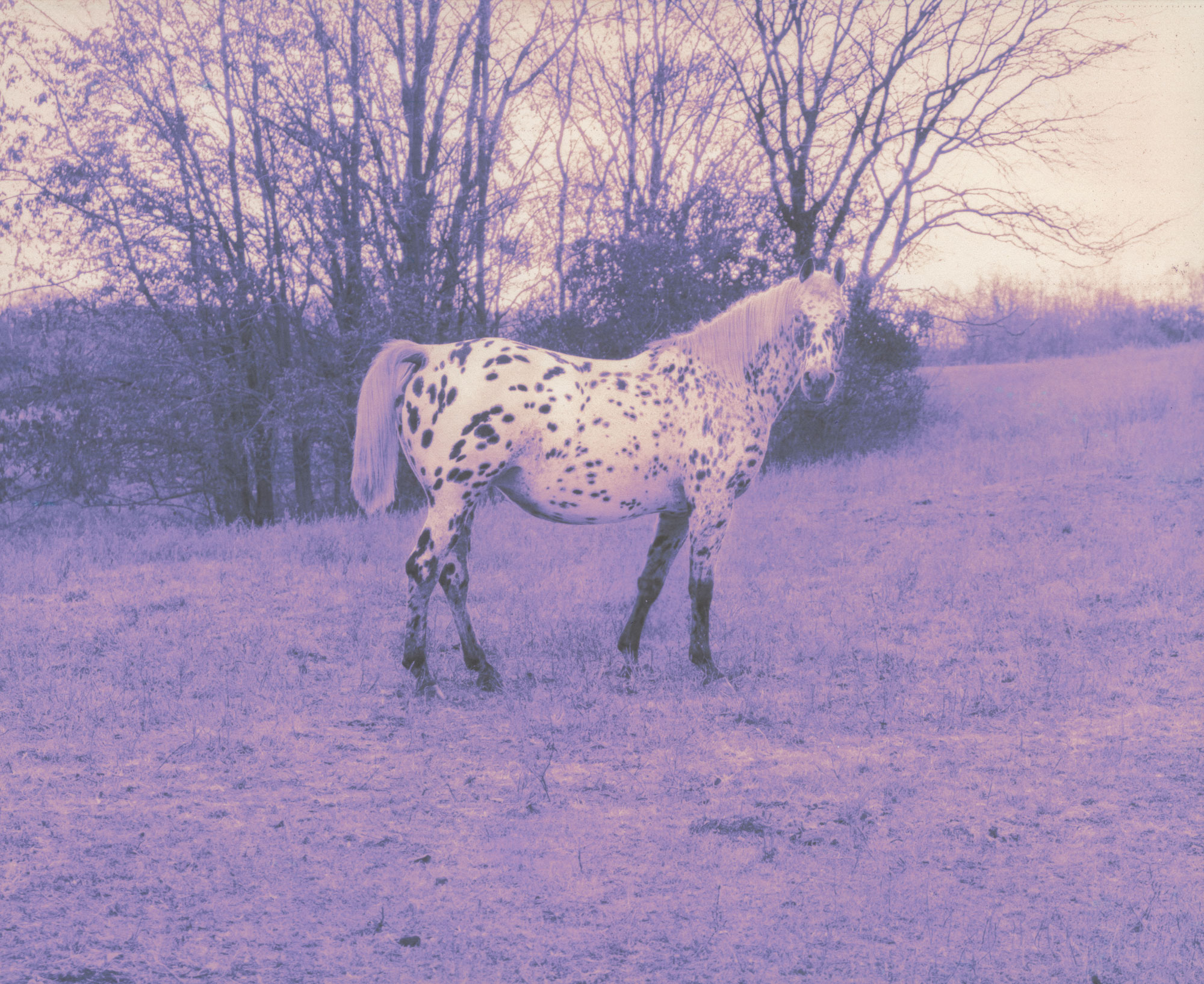
Where will you be traveling?
Arles, Paris France
What will you be traveling for?
To attend Les Rencontres Arles Festival, one of the longest running photography festivals in Europe and to visit a vast selection of other galleries, museums and photographic institutions in Paris.
Can you give a short summary of your art practice?
My photography explores the intersection of reality, memory, and dreams—fluid, emotional, and ever-changing. Through both digital and analog methods, I delve into themes connected to our relationship with nature. Embracing a quiet, deliberate process, I resist the commodification of time and attention, stepping outside the chaos of contemporary life to focus on spaces governed by nature’s laws. My work invites viewers to reconnect with wild, ego-free zones, offering an alternative vision to the pressures of modern culture and highlighting the timeless, powerful forces that shape our world, beyond the reach of currency or government.
What are some of the inspirations for your practice?
I draw inspiration from photography, cinema, and literature. The cinematography of Robby Muller, films by Andrei Tarkovsky and Wim Wenders, and writers like Jorge Luis Borges, Sam Shepard, Mary Oliver, Barry Lopez, and Margaret Atwood influence my creative vision. In photography, I admire the works of Robert Adams, William Christenberry, Barbara Bosworth, Kristine Potter, Pia Guilmouth, Morganna Magee, Emiliano Zuniga Hernandez, and Allan Salas. These artists explore slow storytelling through landscape, uncovering historical secrets and reflecting on our deep connections to narrative and land. Their work invites reflection on the environment’s poetic power and its profound emotional resonance.
Sean Patrick Hill
He / Him
www.seanpatrickhill.com
@kentuckyfieldguide
Louisville, KY
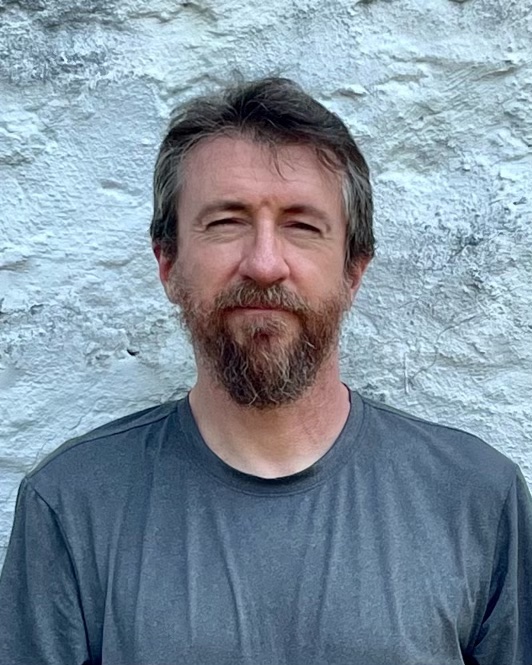
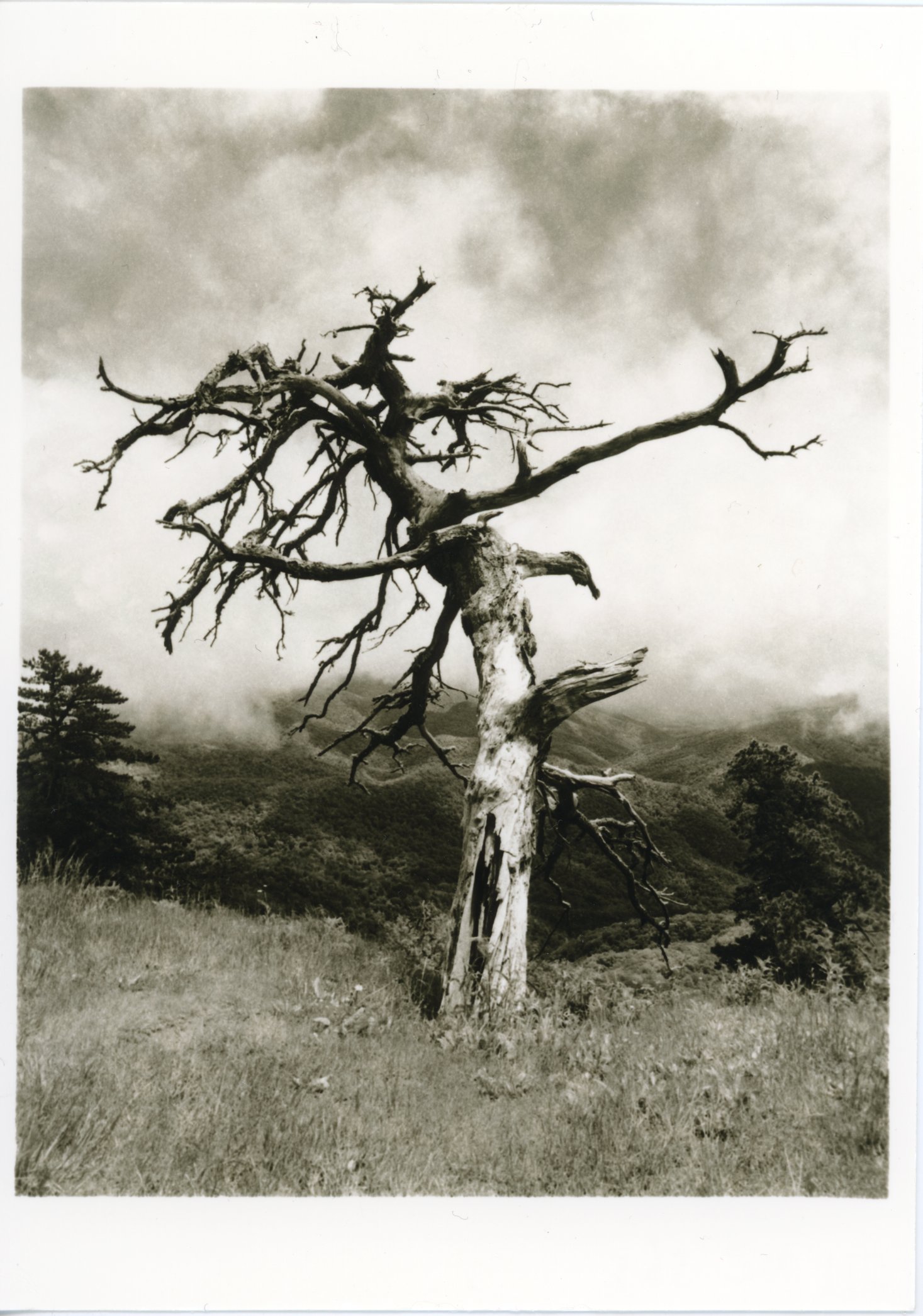
Where will you be traveling?
Barcelona, Madrid, & Bilbao, Spain
What will you be traveling for?
I’ll be participating in the Experimental Photography Festival and visiting museums and galleries throughout Spain, including the Prado and Guggenheim.
Can you give a short summary of your art practice?
I am a photographer, mostly concentrated on film and printing, including traditional darkroom prints like gelatin silver and, lately, lith printing, and digital composites. I’ve been photographing with large and medium format cameras for seven years.
What are some of the inspirations for your practice?
My deepest influences are photographers like Brett Weston, Minor White, and Paul Caponigro, but increasingly I’m interested in photographers who do experimental darkroom work like Klea McKenna and Jeff Cowen.
Devan Horton
She / Her
www.devanhorton.com
@hortondevan
Bellevue, KY
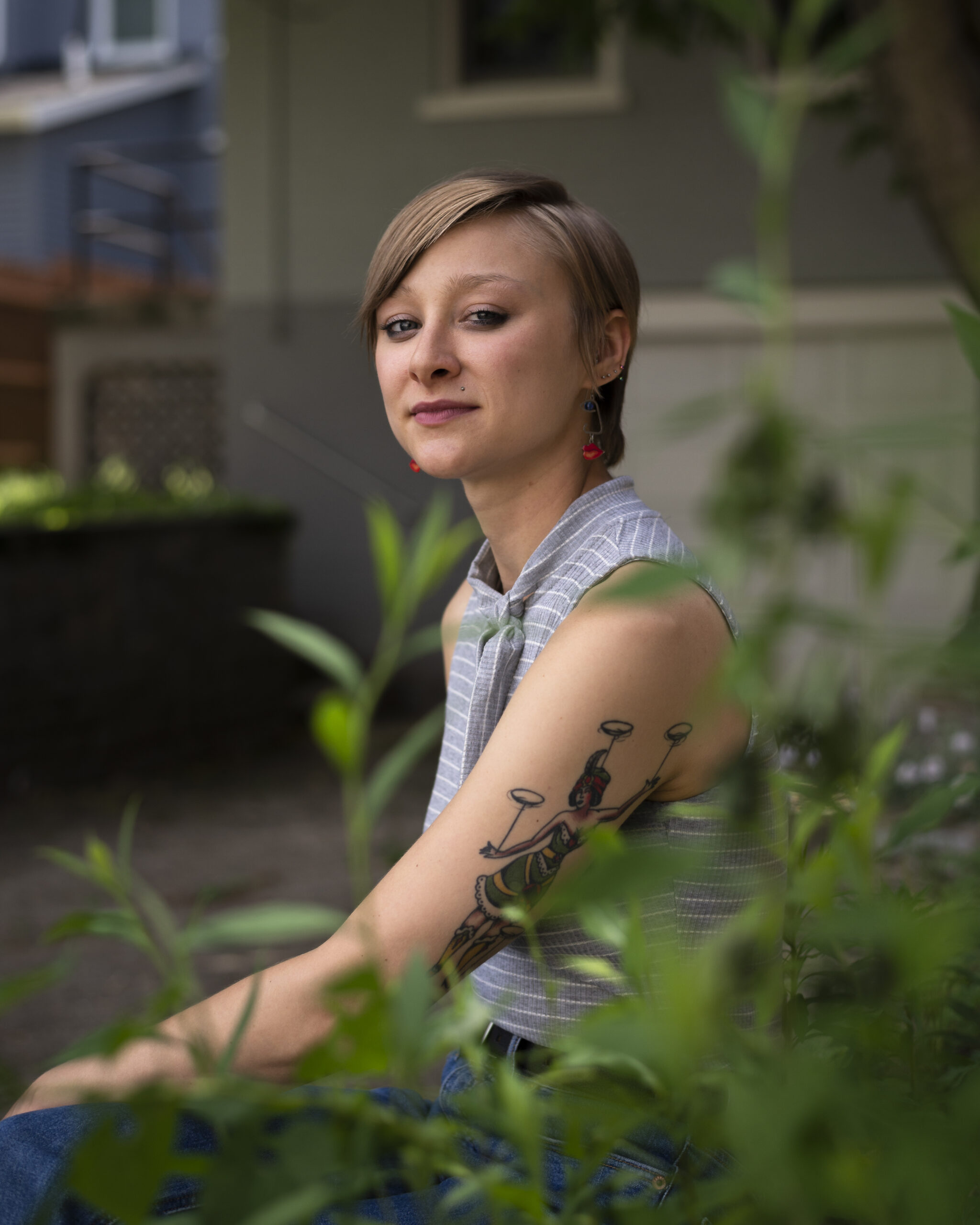

Where will you be traveling?
Santa Fe, New Mexico
What will you be traveling for?
I will be attending SITE Santa Fe alongside visits to the Georgia O’Keeffe Museum, the Museum of Contemporary Native Arts, and a studio visit with artist Michael Scott. My current work is much more tied to storytelling, region, and native art than it’s ever been, which are all themes touched on at each of the exhibitions I will be attending. I have recently transformed my art practice and this trip will help inform a new body of work I am creating.
Can you give a short summary of your art practice?
I am an artist who was primarily an oil painter who painted trashed landscapes in order to confront our societal obsession with consumption and waste. This series caused me to think more about my own consumption habits which caused me to completely change my art practice to a sustainable one using botanical dyes and homemade pigments. With these new mediums I am also transforming my narrative from one which focused on how we are disconnected to nature to one that shows we are inseparable.
What are some of the inspirations for your practice?
I am inspired by Native American art, Georgia O’Keeffe, and contemporary environmental artists such as Mary Mattingly and Tan Zi Xi. I am extremely passionate about sustainability and nature which informs so much of my work. I am also inspired by natural processes of birth, growth, decay, and transformation, and cycles.
Levi House
He / Him
@lonrism
Lexington, KY
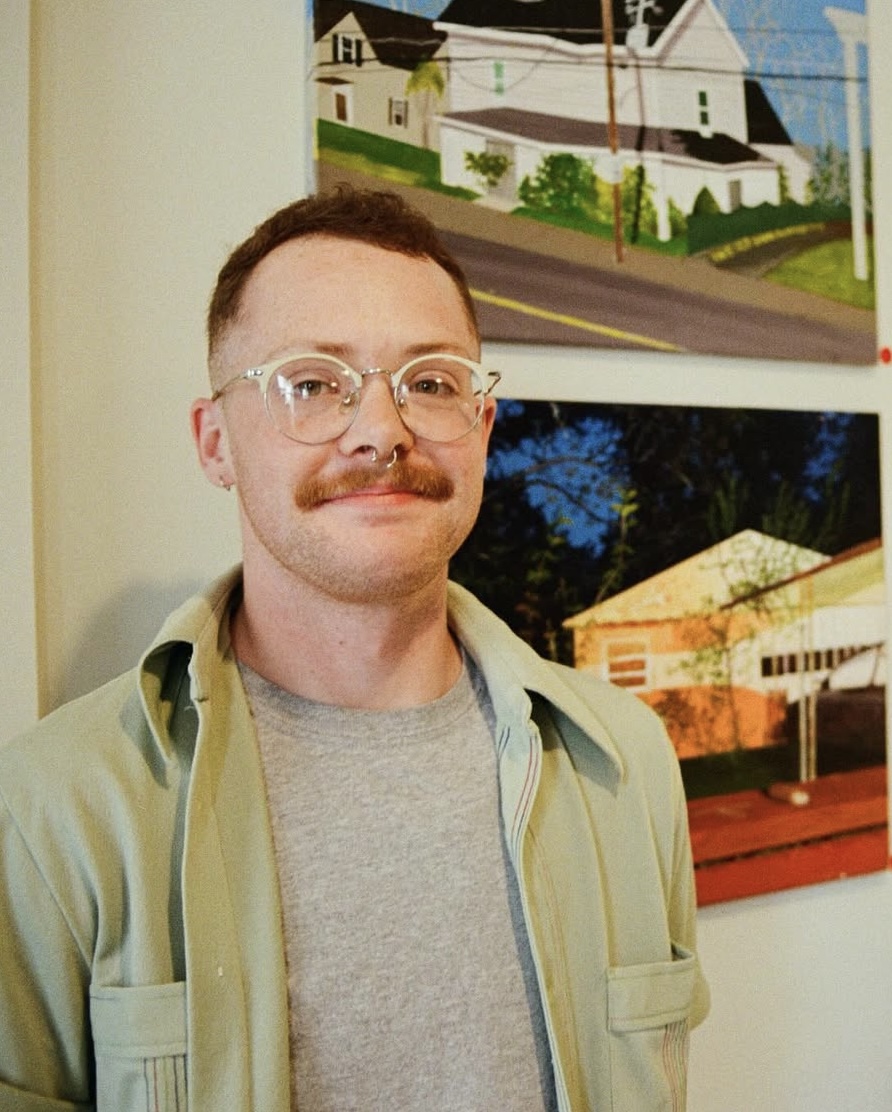
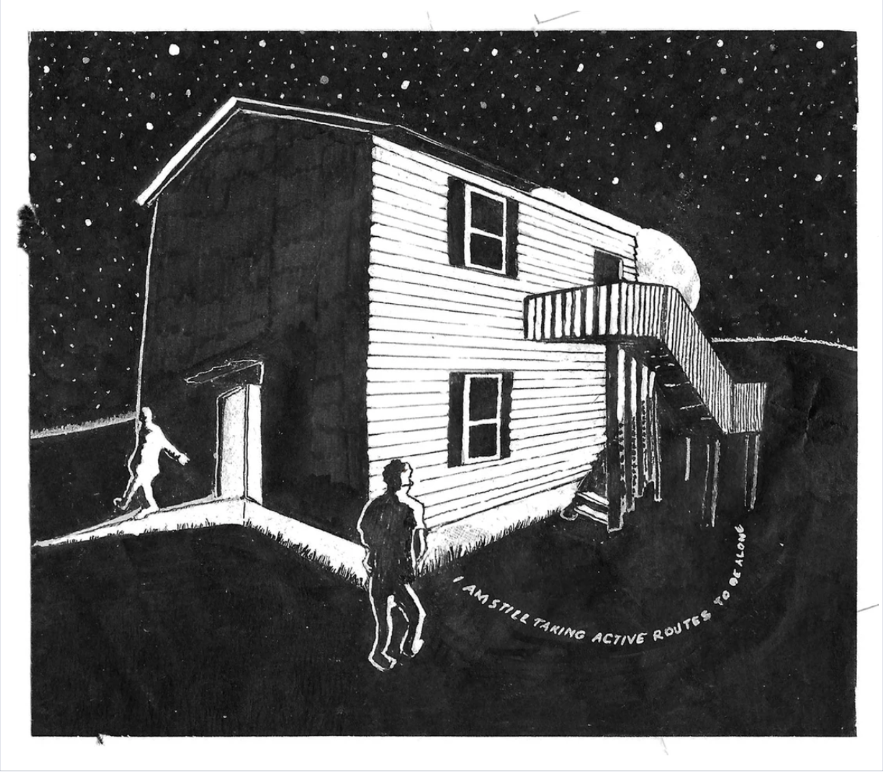
Where will you be traveling?
Palm Springs, California
What will you be traveling for?
I will attend a few different exhibitions and installations in Southern California, including exhibitions at the Palm Springs Museum of Art which explore LGBTQ+ artists’ responses to experiences of exclusion and “Tzahualli: Mi memoria en tu reflejo (My Memory in Your Reflection),” an exhibition of Guadalupe Rosales’ work. I’ll also explore Salvation Mountain, East Jesus, both environmental installations, as well as the many art installations within Joshua Tree and nearby Salton Sea. I will also spend multiple days at the Museum of Contemporary Art in San Diego.
Can you give a short summary of your art practice?
My work, which primarily includes acrylic paint, ink, and graphite, explores concepts of home and how we relate to it, moments of daily magic, connections to nature, gender, family, and solitude. My process involves spending intentional time alone. I begin with a concept which is planned out but the act of making is guided by intuition and the invitation of becoming engulfed in the process of creating. In my work I often reduce subjects to flat color or silhouettes. I like that the process of working with limited colors or depth demands that I think about each mark differently.
What are some of the inspirations for your practice?
I am influenced by printmaker John Lackey, painters Matt Bollinger, Rebecca Ness, and Maddie Aunger, word artist Jenny Holzer, the Suprematism art movement, and folk artists like Howard Finster.
Joshua Jenkins
He / Him
www.joshuajenkinsart.com
@joshuajenkinsart
Louisville, KY
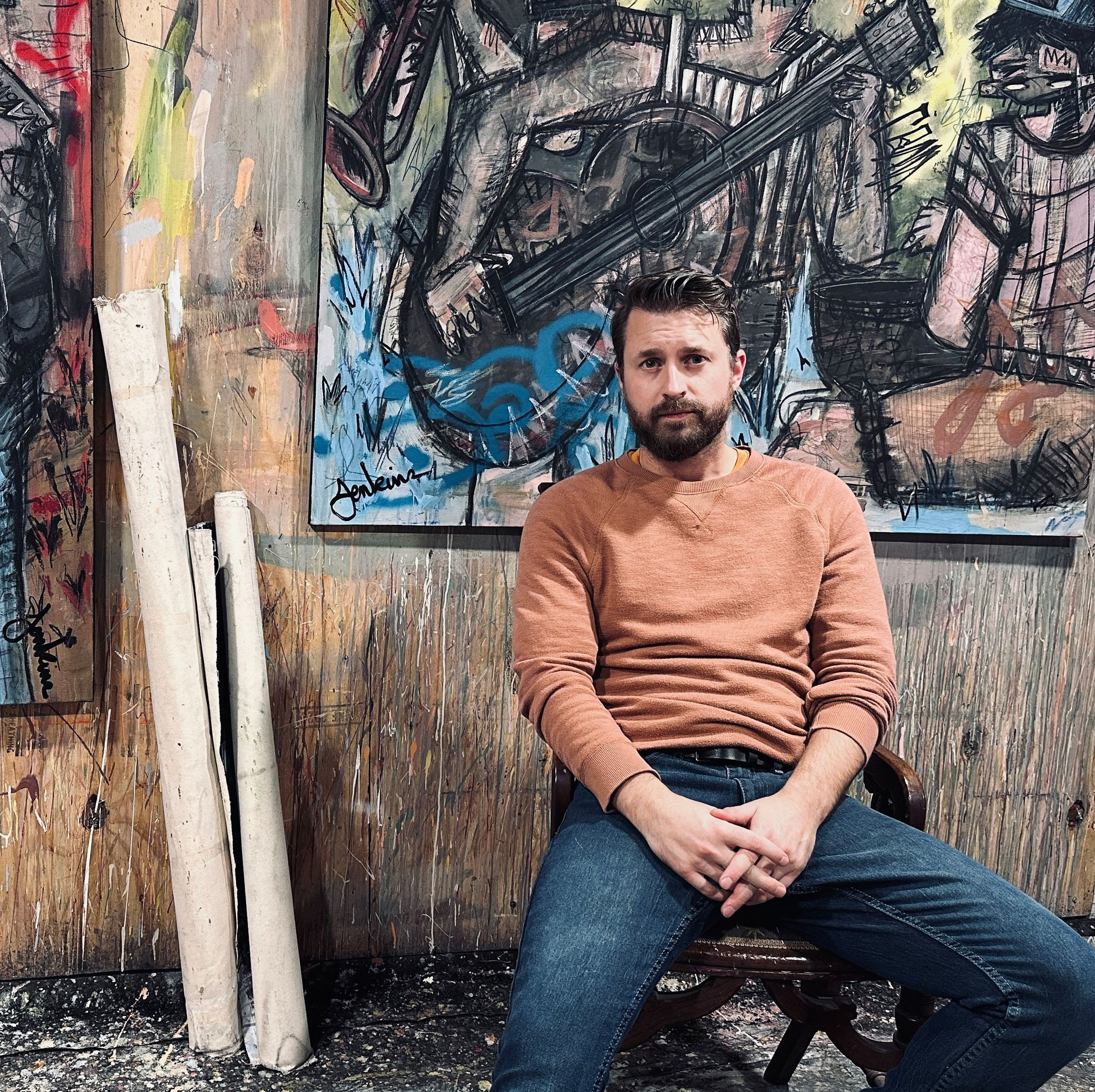

Where will you be traveling?
Berlin, Germany
What will you be traveling for?
I will travel to Berlin for an immersive exploration of the city’s vibrant art scene, focusing on the 13th Berlin Biennale and its theme of futility and dignity. I plan to visit key museums, galleries, and private collections, including the Brücke Museum, Berlinische Galerie, and Urban Nation, to study Expressionism and street art—both central to my practice. Engaging with Berlin’s dynamic public art and creative spaces, I hope to deepen my understanding of its local urban culture and its historical context of the greater art world. This transformative experience will refine my artistic vision and inform future works for my upcoming exhibition at KORE Gallery in June of 2026.
Can you give a short summary of your art practice?
My practice blends painting and multidisciplinary approaches to explore identity, masculinity, and cultural contrast. I use bold colors, gestural lines, spray paint, and collage to create layered, emotionally charged narratives. The human figure is central, often fragmented to reflect tensions of self-perception, queerness, and displacement. Recently, I’ve explored the symbolism of horned animals in relation to masculinity. Bridging urban and rural aesthetics, my work invites viewers to engage with themes of belonging and representation through a dynamic fusion of raw emotion and visual storytelling.
What are some of the inspirations for your practice?
My art practice is deeply influenced by Expressionism, street art, Naïve Art, and Pop Art, blending raw emotion with the contrasts of urban and rural landscapes. I draw inspiration from artists like Kirchner, Beckmann, Baselitz, Basquiat, Condo, and Picasso, whose work informs my use of bold color, gestural lines, and fragmented figures. My practice explores themes of identity, masculinity, and cultural displacement, often engaging with pop culture to push artistic boundaries. By combining traditional and contemporary influences, I create layered narratives that reflect the tension between self-perception and the world around me, challenging conventional representation and artistic categorization.
Cynthia Norton
She / Her
www.cynthianorton.net
@ninnienaive
Louisville, KY
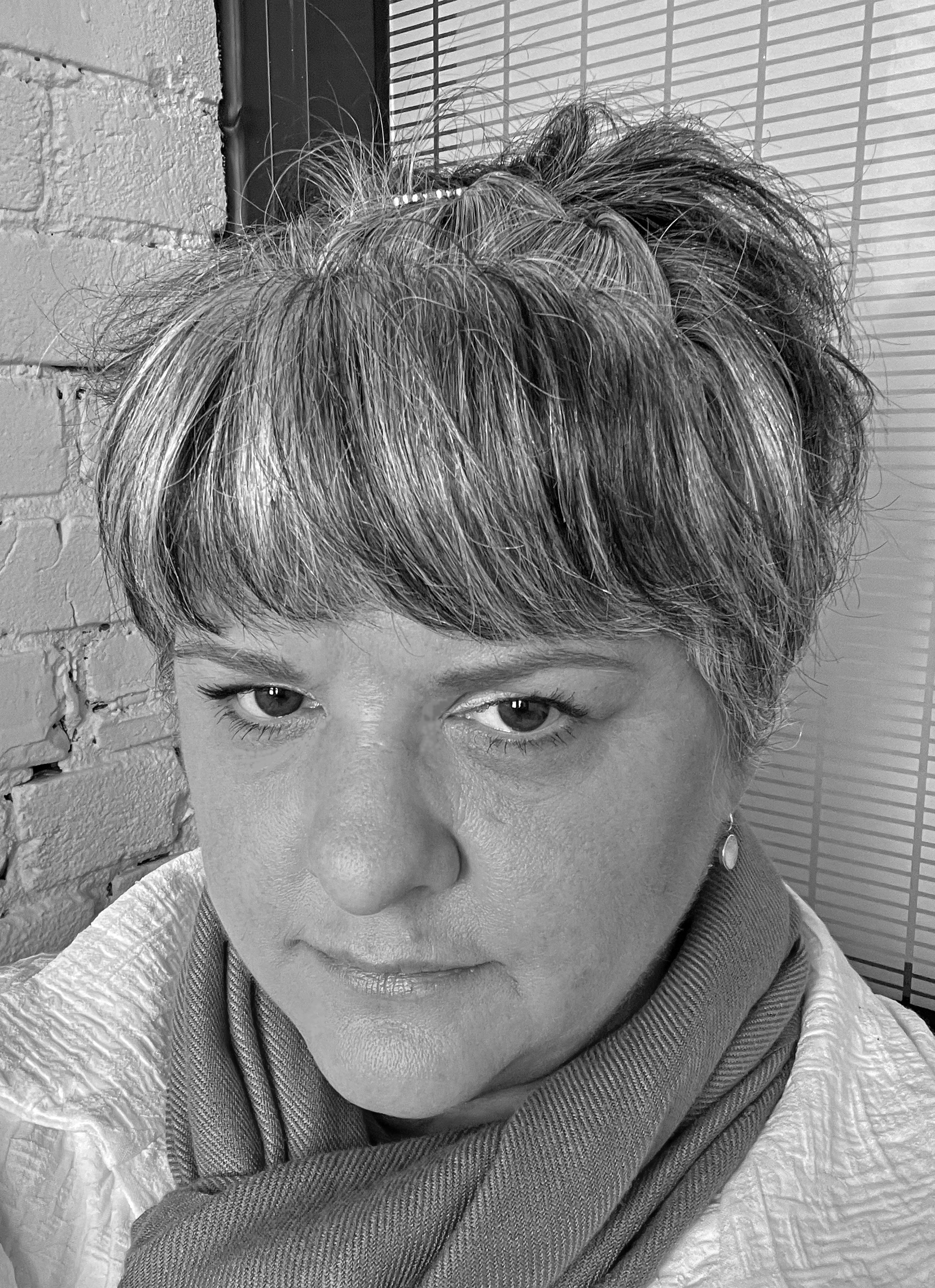

Where will you be traveling?
Minneapolis, MN
What will you be traveling for?
My main focus is to reconnect with two artists from my graduate school at the Alhambra of Minnesota. I’m very excited to view the show by a young Berlin based artist at the Walker Art Center, by Pan Daijing, entitled Sudden Places, 2025. A spectacular exhibition I witnessed in Louisville was, Supernatural America: The Paranormal in American Art, at the Speed Museum; organized by the Minneapolis Institute of Art and by Robert Cozolino. I plan to meet him in the city. He saw my performance in Philadelphia in 2012. I will also meet Esther Callahan, a recent curator of my work.
Can you give a short summary of your art practice?
I am a politically conscious painter, sculptor, instrument builder and performance artist. Influenced by the folk aesthetic and history of the American South, I appropriate, manipulate, and re-purpose the material that surrounds me to create time-based works in performance, video and sound.
What are some of the inspirations for your practice?
Zero Group, Social Sculpture, Fluxus, Shigeiko Kubota, Magritte, Duchamp, Leonardo, Joseph Beuys, Anne Hamilton, Laurie Anderson, Artaud, Cesar Paternosto, Adorno, Jean Tingley, Otto Piene, Yoko Ono, Robert Plant, Jimmy Page, Hugo Ball, Georgia O’Keefe.
Joyce Ogden
She / Her
www.joyceogden.com
@joyceogden
Georgetown, IN

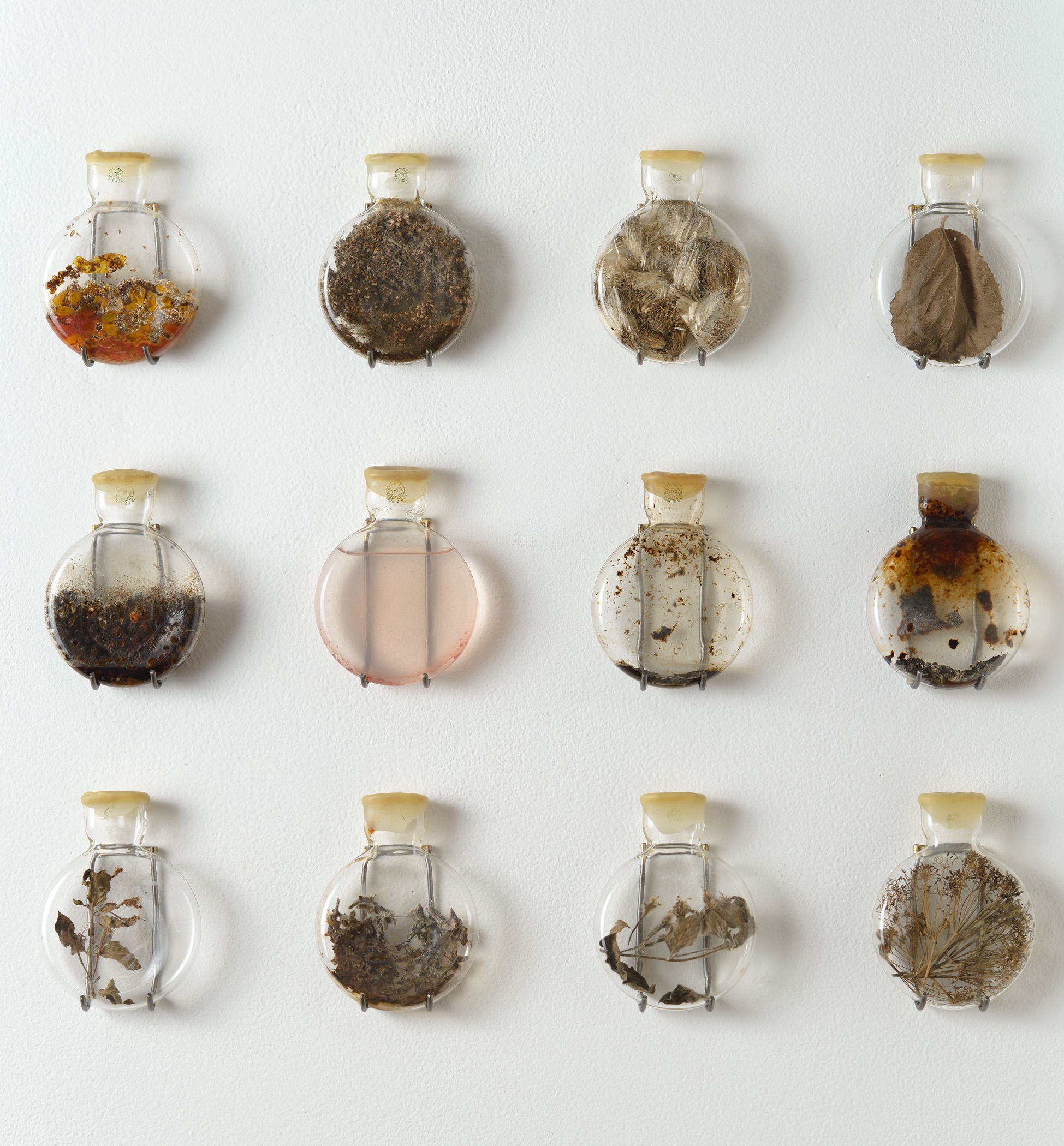
Where will you be traveling?
Collemachia, Rome Italy
What will you be traveling for?
I will be attending an international residency program at the Museum of Loss and Renewal in Collemacchia, Italy, providing an intensive period to critically engage with artists from a range of backgrounds and countries. The residency is situated in a small village in the Apennine Mountains of Italy’s Molise region which holds a rich complex history visible in the area’s architecture, customs, agricultural lands, and forests. This residency will allow an expansive approach to my research that considers soil currency and farming practices crossing borders. I will also spend time in Rome attending several contemporary museums and galleries.
Can you give a short summary of your art practice?
My practice addresses Western culture and the built environment that often lies in opposition to nature. As a sculptor and a farmer, I make rituals in the studio that cross-pollinate and inform growth and cultivation. My work focuses on the elemental materials that audiences traditionally associate with the day to day such as soil, eggs, and plant material. The ordinary and daily habit of hard labor creates the food I eat and the art I make, and I draw across my empirical understanding of the earth to elevate the hidden cultures of agriculture and place.
What are some of the inspirations for your practice?
Artists: Agnes Denes, Dineo Seshee Bopape, Joseph Beuys, herman de vries, Ana Mendieta, Matthew Moore, and Claire Pentecost. Authors, scholars, and scientists: Lewis Hyde, Robin Wall Kimmerer, Richard Sennet, Rudolph Steiner.
Shachaf Polakow
He / Him
www.shachafpolakow.com
@shachaf.polakow
Louisville, KY
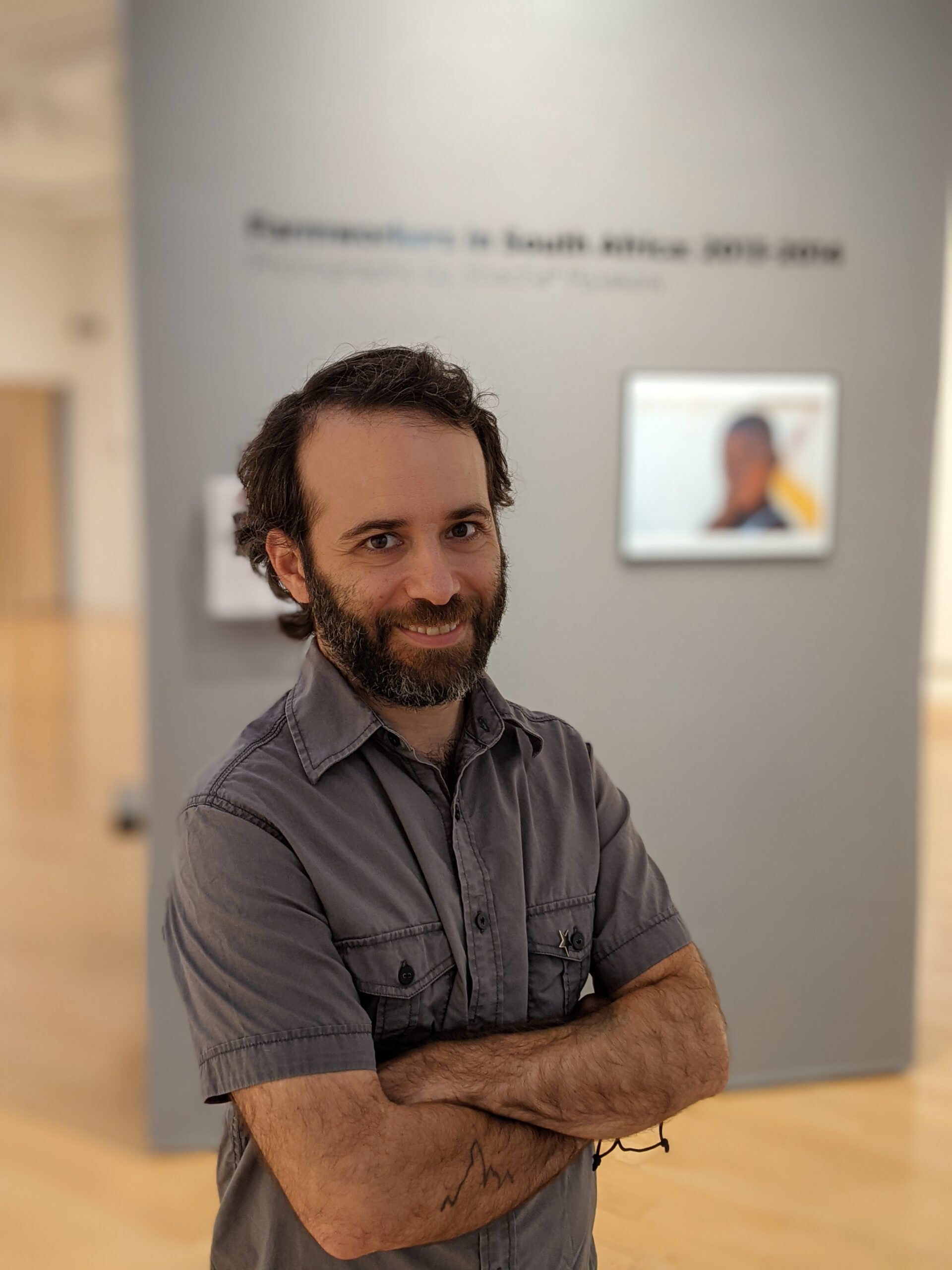

Where will you be traveling?
Finland, Estonia, Lithuania and Latvia
What will you be traveling for?
I’m planning a three-week trip to Finland, Estonia, Latvia, and Lithuania, with the highlight being the Helsinki Biennale this summer. I’ll spend a week in Helsinki exploring its venues and events under the theme “Shelter,” which takes a multispecies approach. After Helsinki, I’ll visit Estonia, Latvia, and Lithuania. In Tallinn, I’ll explore the Kumu Art Museum, Fotografiska, and contemporary art spaces. Riga’s galleries, like Kim? and NOAS, focus on new media and sound art. In Lithuania, I’ll visit NIDA’s artist colony, Klaipeda, and Vilnius, where I’ll explore the 2025 Vilnius Biennial and Jewish heritage sites connected to my family history.
Can you give a short summary of your art practice?
With a background in photo documentary, my practice ranges from direct photography to experimental new media. I explore my surroundings, uncovering historical layers in landscapes, communities, and relationships. My lifelong political engagement shapes my work, and as a member of Activestills, a Palestinian-Israeli photography collective, I highlight societal injustices. My recent projects examine human-environment relationships amid global crises, using photography, sound, and video to document ecological changes. I incorporate 3D scanning and homemade sound devices to create immersive experiences. My work counters pessimism, encouraging viewers to imagine utopian possibilities and the positive impacts of reimagined environments.
What are some of the inspirations for your practice?
What inspires me the most is resiliency, the organizing and survival of marginalized communities, kinships between species, revival of nature where rewilding is happening. Writers and Artists that insist on including hope in their practice are those who are really inspiring at the moment, but this is not a naive hope, it is hope that we need to insist and work for.
Taylor Sanders
She / Her
www.taylorsandersart.com
@sculptingme_
Louisville, KY
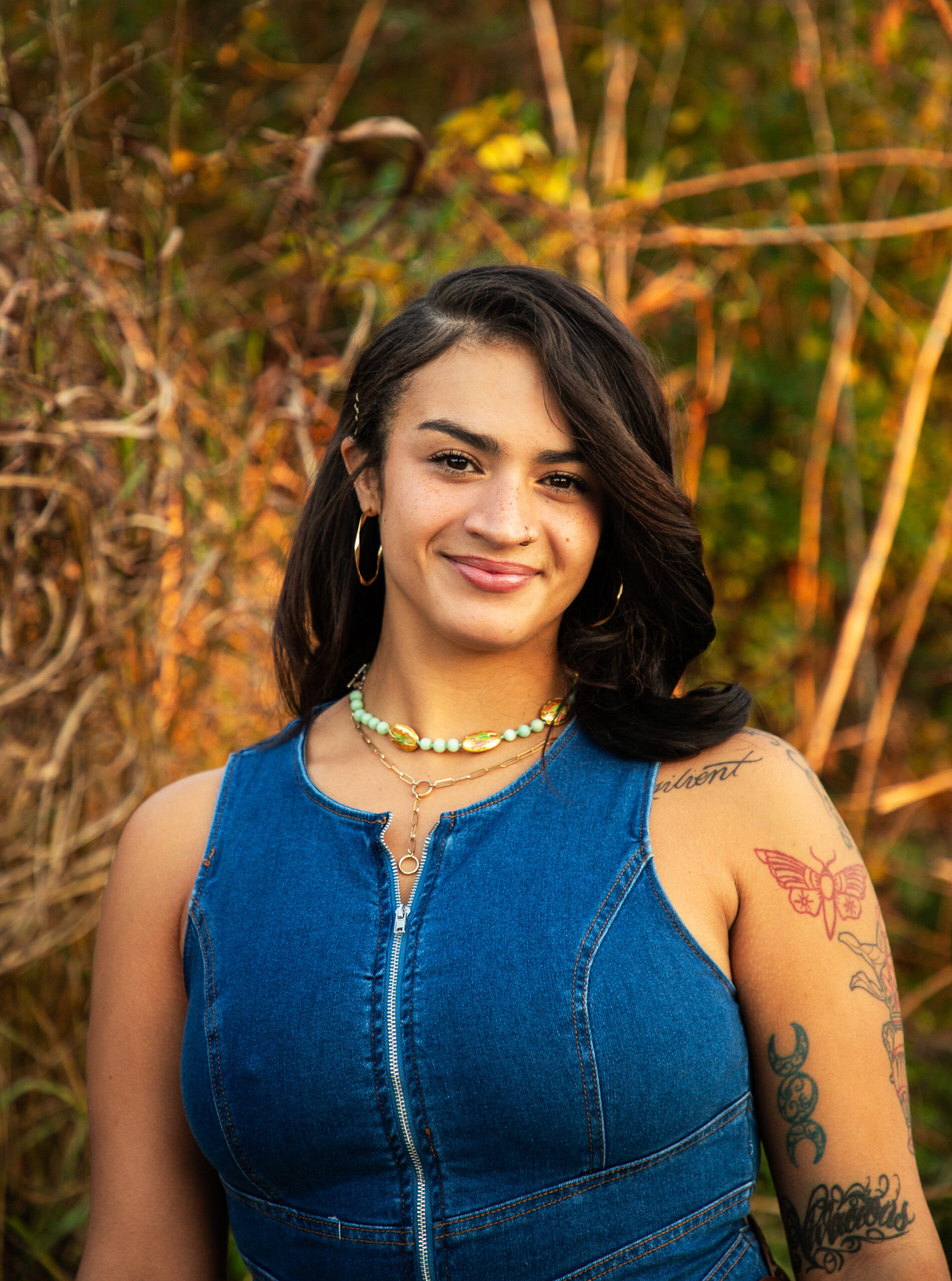

Where will you be traveling?
London, England & Amsterdam, Netherlands
What will you be traveling for?
I am traveling to London and Amsterdam for an art-focused trip to explore contemporary installation and sculpture. Visiting museums such as Tate Modern, Stedelijk Museum, and NXT Museum, I will experience exhibits by Leigh Bowery, Do Ho Suh, and Pamela Rosenkranz, whose work examines identity, memory, and materiality. This journey will allow me to engage with European perspectives on social issues through art. Experiencing how these artists use space, materials, and audience interaction will deepen my practice and expand my approach to representation, inclusion, and the dialogue between history and contemporary experience.
Can you give a short summary of your art practice?
I am a multimedia artist integrating found objects through sculptural processes to transform their context and tell new stories. Drawn to their familiarity and history, I explore their original purpose while reimagining their meaning. My work reflects both personal experiences and the broader Black experience, using material culture to examine slavery, Jim Crow, the Civil Rights movement, mass incarceration, and contemporary social issues. Through color, texture, and space, I create work that evokes emotional and intellectual engagement. Incorporating text and interactive elements, I encourage viewers to reflect on their connections to history and present realities.
What are some of the inspirations for your practice?
My work is inspired by artists like Kara Walker, Ai Weiwei, and Judy Chicago, who challenge history, identity, and social structures through powerful installations. I draw inspiration from both current and historical events using art to explore their lasting impact on society.
Kat Smith
They / Them
www.materialdrifter.rodeo
@material.drifter
Lexington, KY
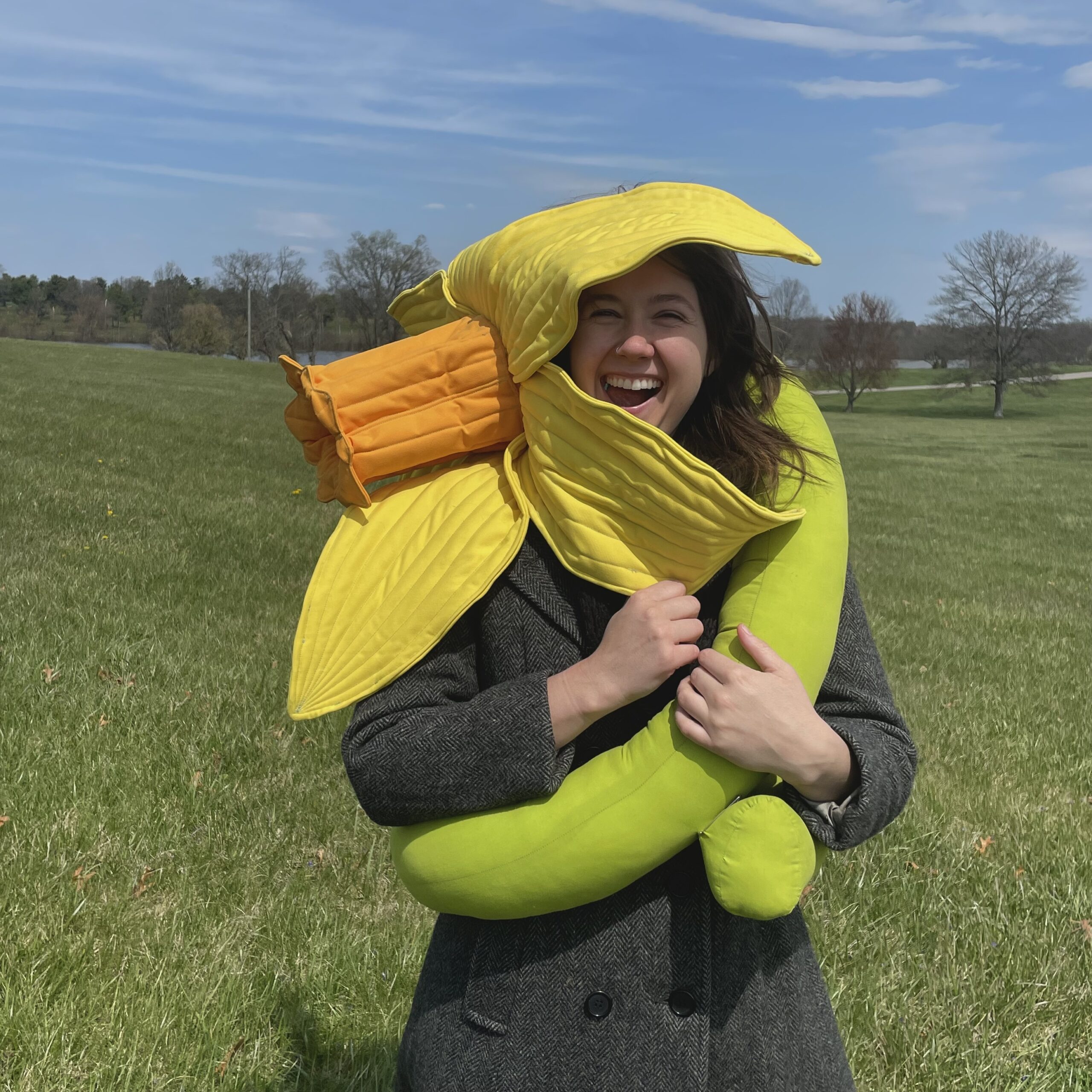
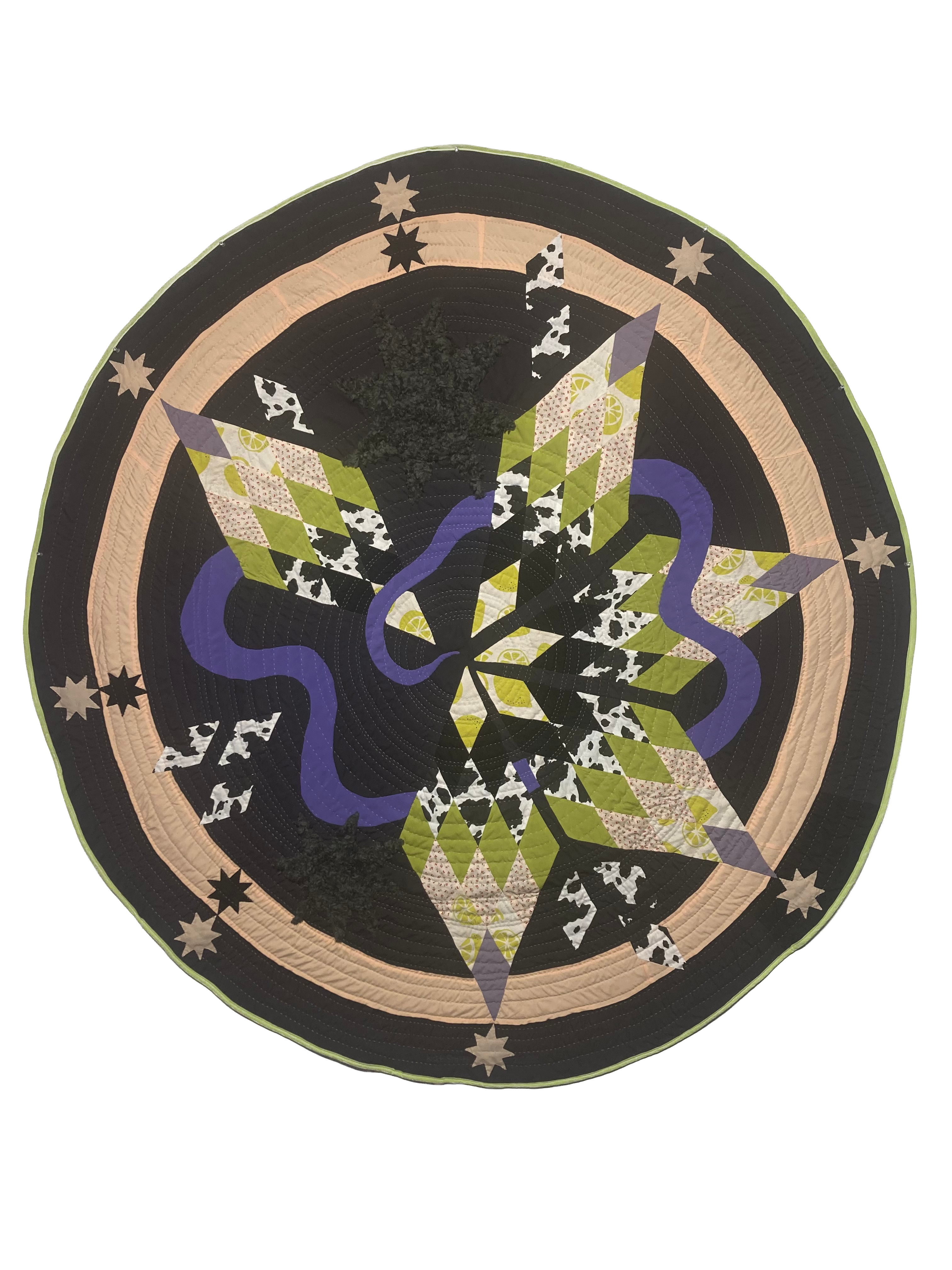
Where will you be traveling?
Palm Springs, California
What will you be traveling for?
I will attend a few different exhibitions and installations in Southern California, including exhibitions at the Palm Springs Museum of Art which explore LGBTQ+ artists’ responses to experiences of exclusion and “Tzahualli: Mi memoria en tu reflejo (My Memory in Your Reflection),” an exhibition of Guadalupe Rosales’ work. I’ll also explore Salvation Mountain, East Jesus, both environmental installations, as well as the many art installations within Joshua Tree and nearby Salton Sea. I will also spend multiple days at the Museum of Contemporary Art in San Diego.
Can you give a short summary of your art practice?
My creative practice mostly manifests through fibers, printmaking, zines, and film photography, often melding these materials together. The themes I am inspired by include the natural landscape around me, home, sense of place, ritual, reflection, dreams, gender, communal practice, and liberatory lineages. My art practice is a spiritual process, similar to my relationship with the natural world, and community organizing. Because of these similarities, I’m often excited to overlap these experiences together.
What are some of the inspirations for your practice?
I’m inspired by community based art projects such as the AIDS memorial quilt, Monument Quilt, The Queer Ecology Hanky Project, Beehive Collective, as well as the puppetry and printmaking of Bread and Puppet Theater. I’m additionally inspired by quilters Bisa Butler, Basil Kincaid, and Zac Foster, folk artist Howard Finster, and the lineage of printmaking and zines found throughout DIY social movements and punk history.
Moksha Sommer
She / Her
www.mokshasommer.net
@emilymoksharose
Morgantown, KY
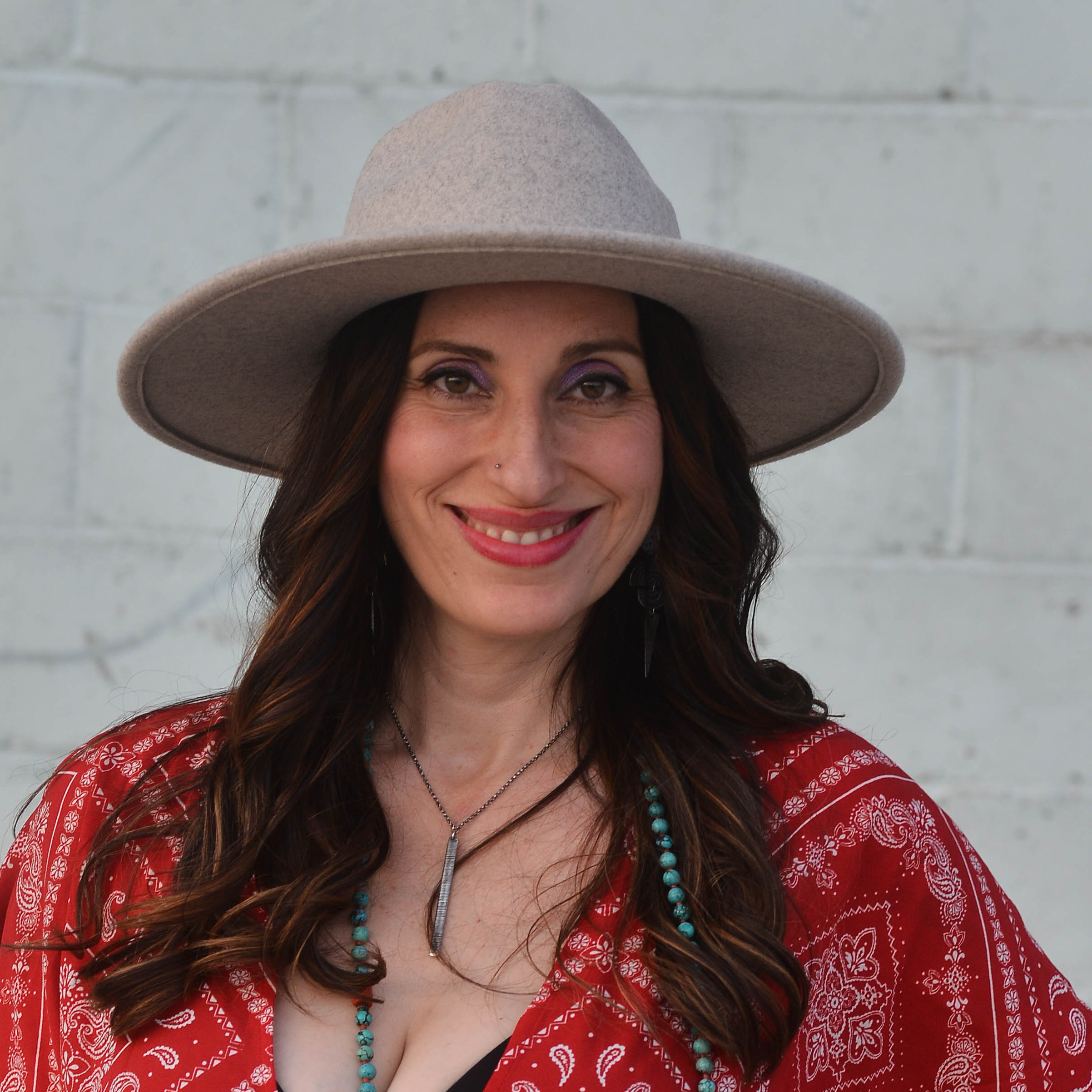
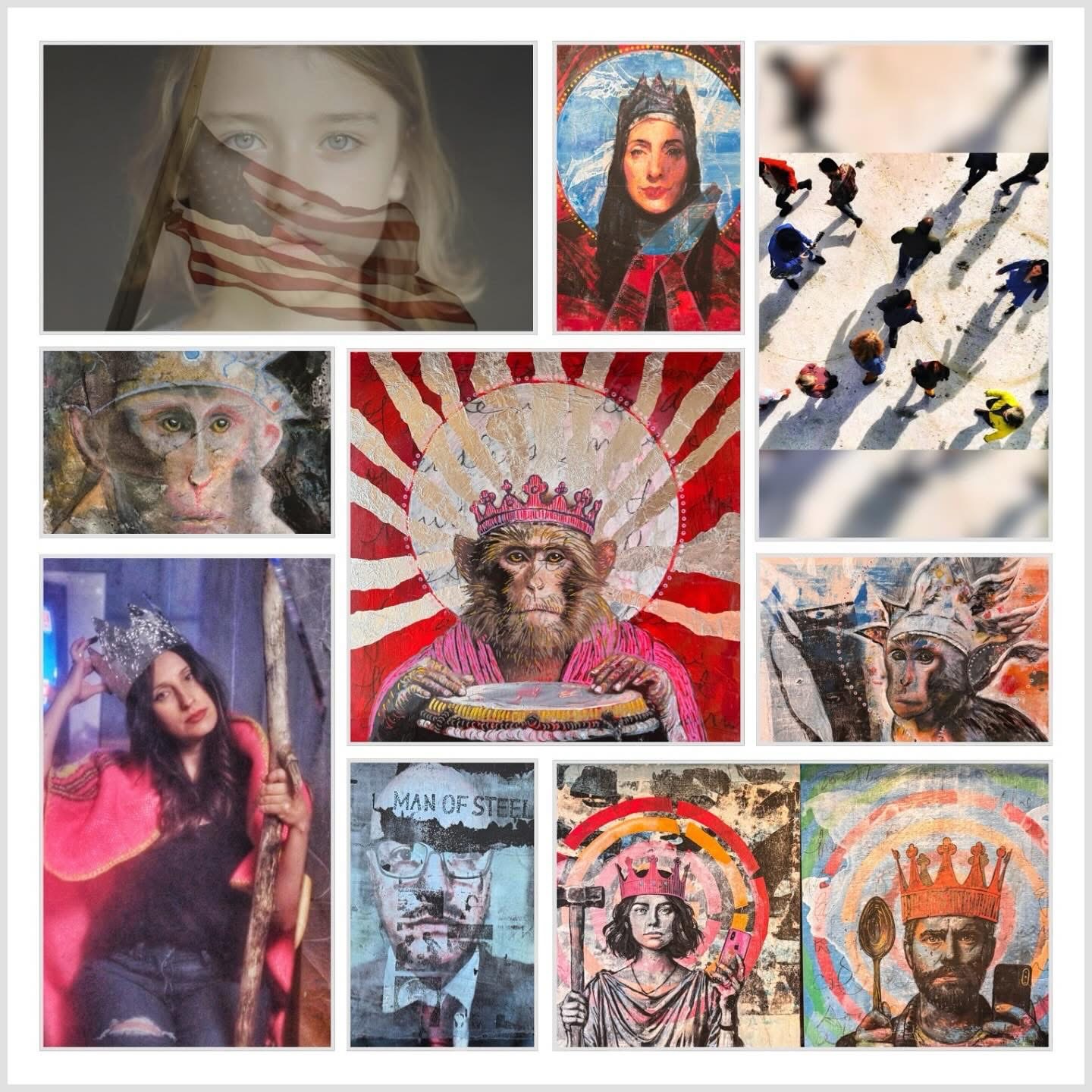
Where will you be traveling?
Vermont and Quebec, Canada
What will you be traveling for?
Thanks to the Great Meadows, this August, I’ll immerse myself in events, starting with a visit to Vermont to explore Peter Schumann’s Bedsheet Mitigations paintings and meet the artist in his studio. I’ll also visit the Burlington Art Centre. Next, I’ll attend the International Symposium of Contemporary Art in Baie-Saint-Paul, Quebec, before heading to the Montreal Museum of Contemporary Art and the Musée national des beaux-arts du Québec. I’ll also visit the PHI Centre in Montreal, renowned for its immersive experiences, virtual reality, concerts, and artistic exhibitions. This journey will inspire and fuel new creative projects.
Can you give a short summary of your art practice?
I am a multi-disciplinary performance artist blending music, visual arts, and immersive experiences to explore art and ritual. With a background in music and media, I create multisensory works that challenge perceptions and foster introspection. My art focuses on vulnerability, connection, and the transformative power of art as a ritual. Through collaborative processes, I explore empathy and community, aiming to create spaces where art blurs the boundaries between artist and participant, encouraging personal and collective exploration of the human experience.
What are some of the inspirations for your practice?
I draw inspiration from contemporary artists whose work redefines sensory and participatory experiences. Artists like Laurie Anderson, Olafur Eliasson, and Janet Cardiff inspire me with their immersive and innovative approaches that engage multiple senses, inviting audiences into transformative encounters. Nick Cave’s integration of sound, movement, and visual art resonates with my interest in exploring themes of identity and transformation. These artists challenge traditional boundaries, emphasizing the power of art to create shared, introspective experiences that invite both personal reflection and collective understanding, shaping the way I approach my own creative practice.
James Robert Southard
He / Him
www.jamesrsouthard.com
@jimboblander
Lexington, KY
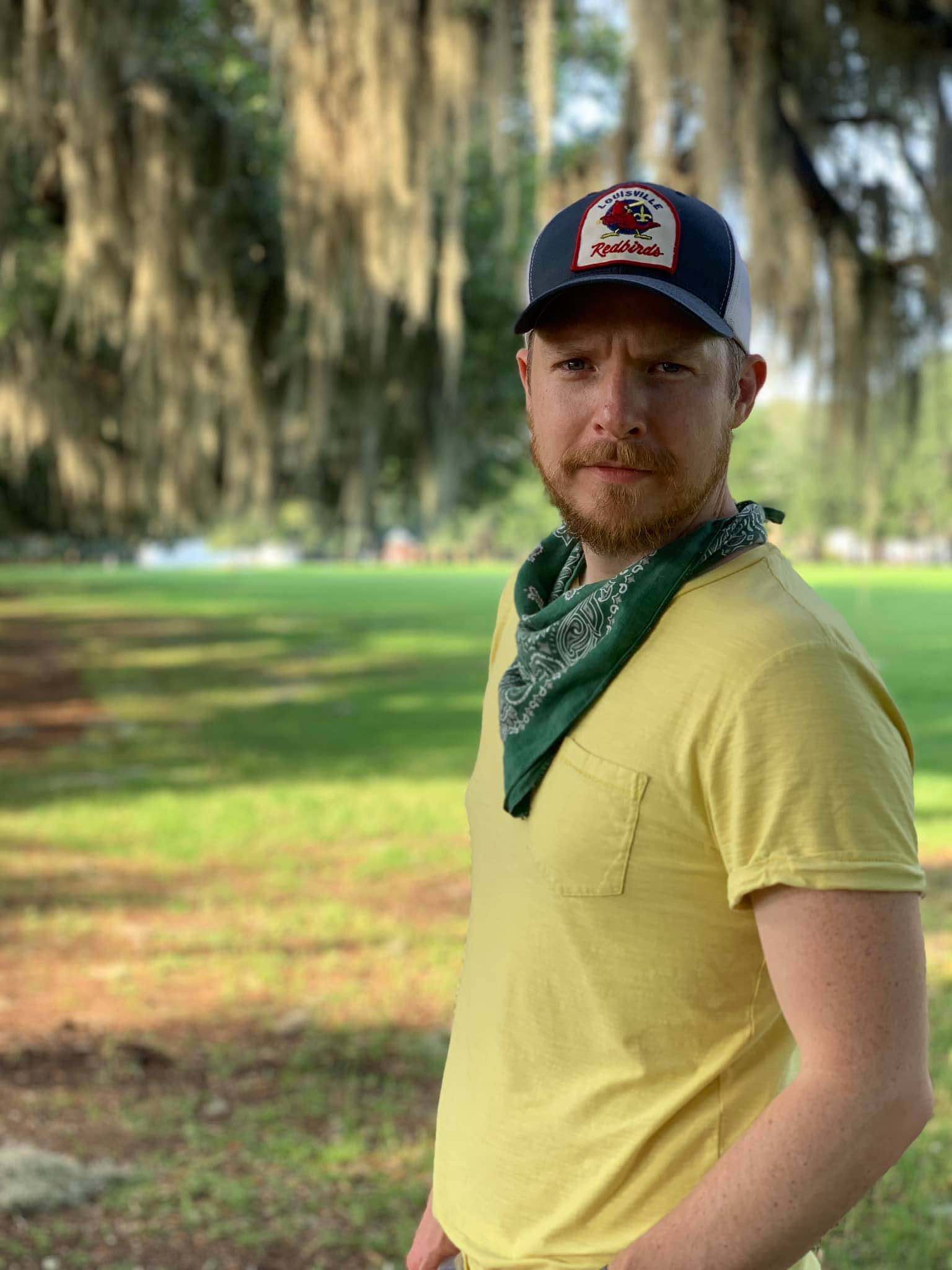

Where will you be traveling?
Mexico City, Mexico
What will you be traveling for?
Thanks to the support of Great Meadows, I’ll be going to Mexico for a month to attend a residency, network with local artists and curators. I have been just offered a residency at Fundación/op.cit. as part of their new expansion into working with non-painter artists. Though their main gallery is in Mexico City, I’ve also been invited to visit their new projects in Puebla and Oaxaca. They recently received the Mexican FPCC grant (Promotion of Development and Cultural Co-Investments) and I would be their first photographer in this expansion of residencies and public programing. I’d be working in the city and presenting during their other exhibitions and painter’s residencies.
Can you give a short summary of your art practice?
Over the past few years, my research has emphasized collaboration with my subjects, encouraging them to share their histories and concerns. I use various techniques—video, digital collages, photo essays, and documentary work—depending on the project. Recently, I returned to my digital collage method, starting with a subject’s portrait and building the background from materials relevant to their story. This approach has been used in commissions like the Lexington Mayoral Portrait of Jim Gray and 21c Museum Hotel. Now, I’m exploring labor-related themes, blending classical aesthetics with digital photography to create meaningful visuals that represent my subjects’ experiences.
What are some of the inspirations for your practice?
It is often assumed that photographers draw their inspiration primarily from their mentors or fellow artists within the medium. However, my strongest studio influences stem from art history. I have long been captivated by the role of patronage in medieval and neoclassical art, particularly how subject matter was shaped by this dynamic and, at times, how it influenced historical narratives. While I regularly engage with contemporary exhibitions to stay attuned to the ongoing conversations within my field, my personal research for studio practice predominantly takes place in the classical wing of museums, among historical collections and trades such as armor and furniture making, where symbolism and historical references are embedded in even the most minute details of materials.
Boris Zakic
www.zakic.com
Turin, Italy
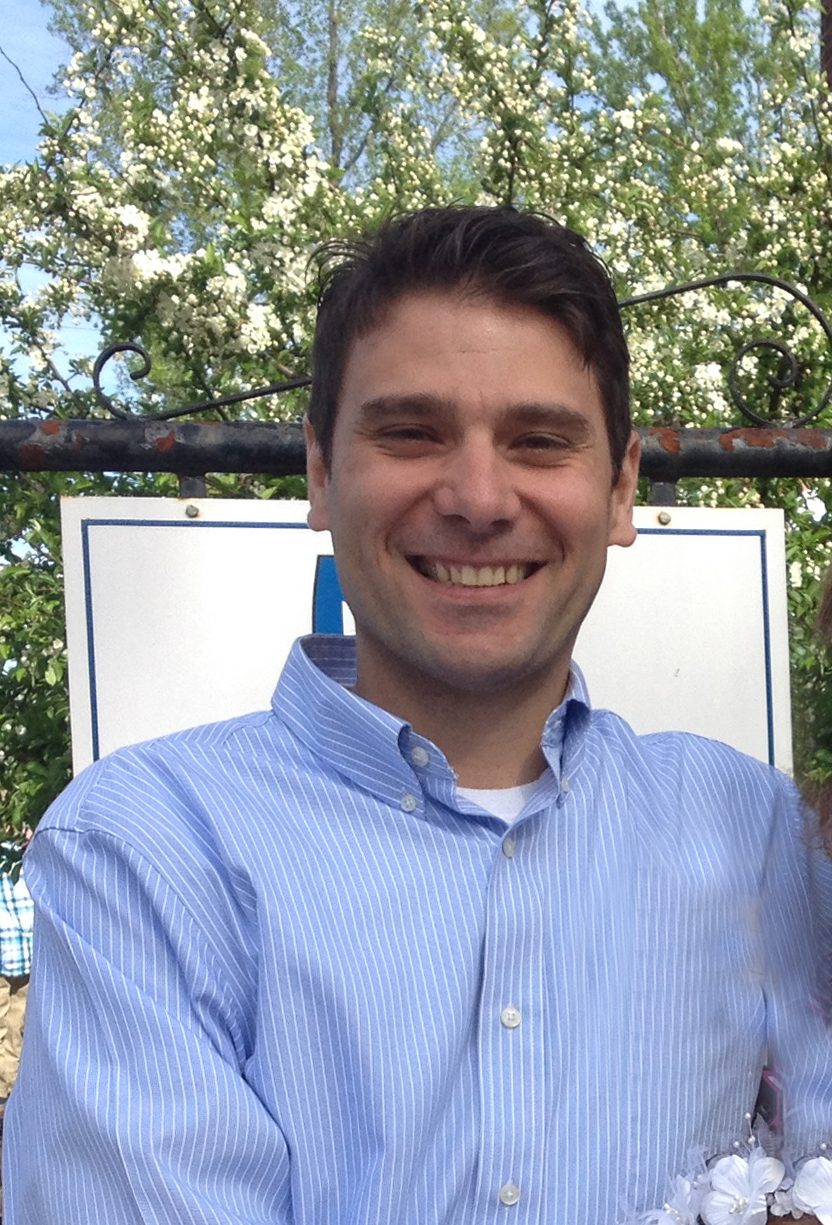
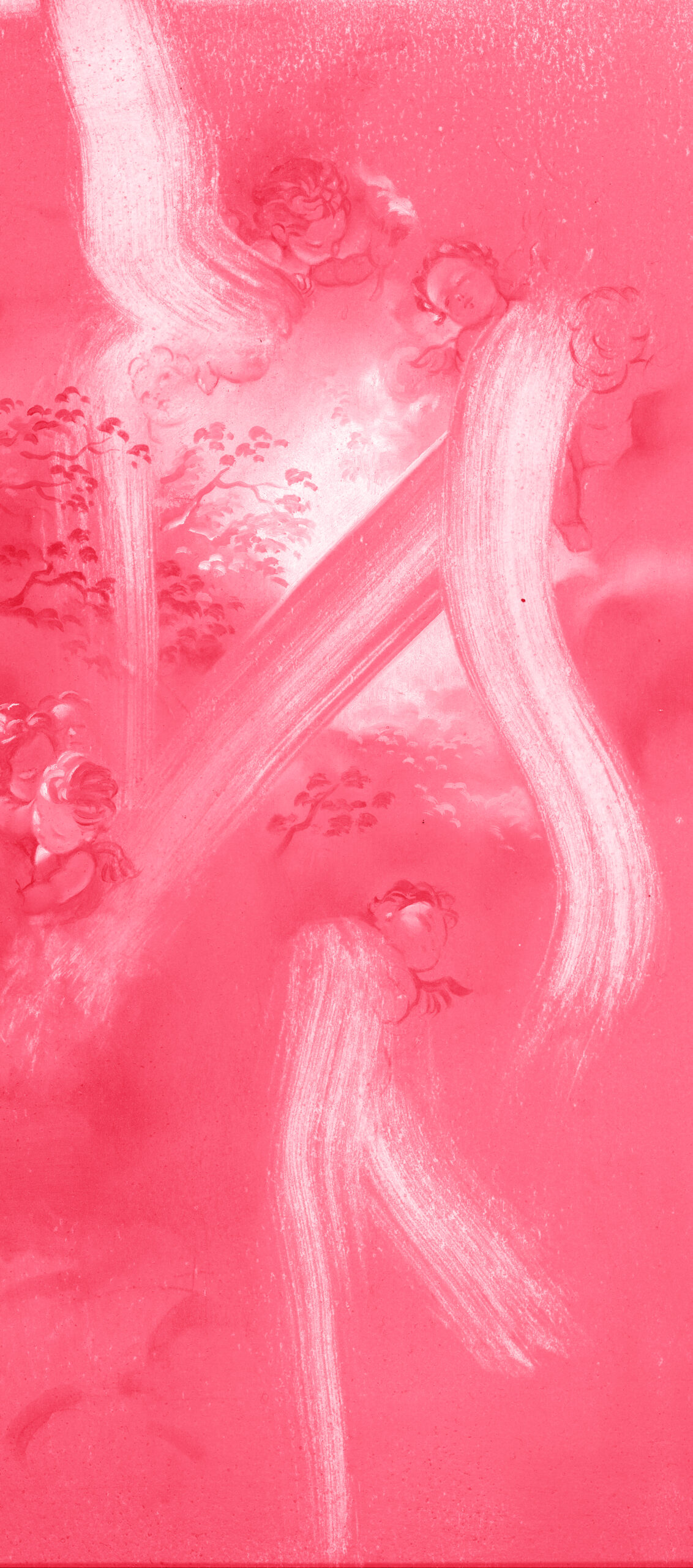
Where will you be traveling?
Turin, Italy
What will you be traveling for?
Conference of the Associazione Italiana di Anglistica (or AIA); to visit the city’s flagship institutions such as the Galleria d’Arte Moderna (GAM), the Fondazione Sandretto Re Rebaudengo, and the Fondazione Merz; and to meet with internationally active Turin-based curators.
Can you give a short summary of your art practice?
I approach painting as a delightful way to explore the limits of immediacy, historiography, and allegorical representation. Generally, the common thread is the belief in painting’s metaleptic possibilities.
What are some of the inspirations for your practice?
Sturm und Drang: Goethe, Schiller, and Schopenhauer provide a strong case for the heightened, almost ecstatic theatrically. Goethe’s Faust, for instance, revolts against cool rationalism through its protagonist’s aggressively seeking personal fulfillment at all costs. Similarly, the “ecstatics” were explored in J.-J. Rousseau’s epistolary novel Julie (1761), where the high-pitched tone and characters’ ambitious naiveté are filled with “errors more worthy than the knowledge of Sages.” These days, Tino Sehgal’s situational constructs seem to build on such ideas, where the art and viewer’s real-time immersion in it become coextensive. However, it might be premature and, for some, too dispossessive to abandon the delicate, lush materiality just yet.
